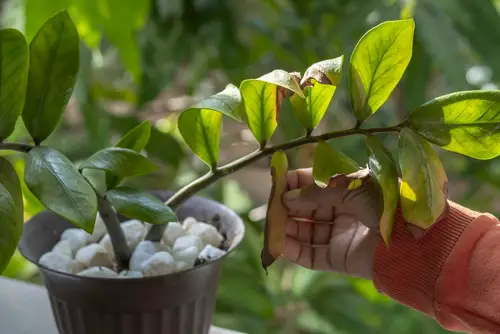ZZ plants are popular houseplants known for their ease of care and attractive appearance. However, it’s not uncommon for ZZ plant owners to notice ZZ plant turning brown, which can be quite concerning.
Brown leaves on ZZ plants can be a sign of various issues, including improper watering, lack of light, low humidity, and pest infestations.
To understand why ZZ plants turn brown, it’s important to first understand the plant itself. ZZ plants are native to Africa and are known for their thick, waxy leaves and ability to thrive in low-light conditions.
However, they still require proper care and attention to remain healthy. ZZ plants are also known for their ability to purify the air, making them a popular choice for indoor spaces.
If you’re noticing brown leaves on your ZZ plant, it’s important to address the issue promptly to prevent further damage. By understanding common problems, the role of the environment, and proper care techniques, you can help your ZZ plant thrive and remain healthy for years to come.
More on this category:
- Sky Pencil Holly Turning Brown
- Skip Laurel Leaves Turning Brown in Winter
- Why Is My Zebra Plant Leaves Turning Brown?
Understanding ZZ Plant
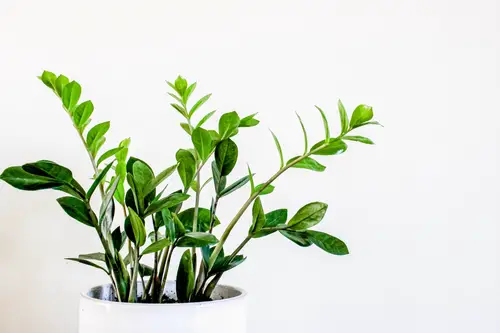
Zamioculcas zamiifolia, commonly known as ZZ plant, is a popular houseplant that is native to eastern Africa. It’s a low maintenance plant that can thrive in a variety of conditions, making it an ideal choice for novice plant owners.
The ZZ plant has thick, glossy leaves that grow in a graceful, arching shape. It’s a slow-growing plant that can reach up to three feet in height, but it can take several years to get there. The leaves are typically a dark green color, but they can also be variegated with yellow or white stripes.
One of the reasons why the ZZ plant is so popular is because it’s incredibly easy to care for. It can tolerate low light conditions, and it doesn’t require frequent watering. In fact, overwatering is one of the most common causes of ZZ plant problems, including brown leaves.
Despite its hardiness, the ZZ plant is not invincible. It can still be susceptible to pests and diseases, and it can also be affected by environmental factors like temperature and humidity. By understanding the needs of your ZZ plant, you can help ensure that it stays healthy and vibrant for years to come.
Why Is My ZZ Plant Turning Brown – 7 Common Problems
ZZ Plant is a hardy and low-maintenance plant, but it can still suffer from various problems that can cause it to turn brown or yellow. Here are some of the most common problems that can affect ZZ Plants:
1. Overwatering
Overwatering is one of the most common problems that ZZ Plants face. When the soil is constantly wet, the roots of the plant can rot, which can cause the leaves to turn yellow and brown.
ZZ Plants prefer to be slightly dry between watering, so it is important to let the soil dry out before watering again. If the leaves are drooping and the soil is wet, it is a sign of overwatering.
2. Underwatering
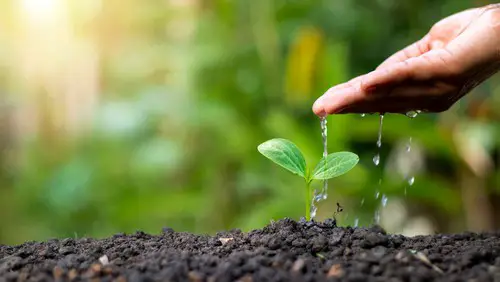
Underwatering is another common problem that ZZ Plants face. When the plant does not get enough water, the leaves can turn yellow and brown. ZZ Plants prefer to be watered when the soil is slightly dry, so it is important to water the plant regularly. If the leaves are drooping and the soil is dry, it is a sign of underwatering.
3. Sunburn
ZZ Plants prefer bright, indirect light, but too much direct sunlight can cause the leaves to turn brown and dry. If the leaves are turning brown and crispy, it could be a sign of sunburn. It is important to move the plant to a shadier spot to prevent further damage.
4. Pest Infestation
Pest infestation can also cause ZZ Plants to turn brown. Common pests that can affect ZZ Plants include spider mites, mealybugs, and scale insects. If the leaves are turning brown and there are signs of pests, it is important to treat the plant with an insecticide.
5. Disease
Disease can also cause ZZ Plants to turn brown. Common diseases that can affect ZZ Plants include root rot, leaf spot, and stem rot. If the leaves are turning brown and there are signs of disease, it is important to remove the affected leaves and treat the plant with a fungicide.
6. Transplant Shock
Transplant shock can occur when ZZ Plants are repotted or moved to a new location. The plant may experience stress, which can cause the leaves to turn yellow and brown. It is important to give the plant time to adjust to its new environment and avoid overwatering during this time.
7. Nutrient Deficiency
Nutrient deficiency can also cause ZZ Plants to turn brown. ZZ Plants require regular fertilization to maintain their health. If the leaves are turning brown and there are signs of nutrient deficiency, it is important to fertilize the plant with a balanced fertilizer.
Role of Environment
ZZ plants are native to tropical regions and thrive in warm and humid environments. Therefore, the environment plays a crucial role in the health of ZZ plants. In this section, we will discuss the importance of humidity, the effects of sunlight, and temperature stress on ZZ plants.
1. Importance of Humidity
ZZ plants require moderate to high levels of humidity to thrive. Low humidity levels can cause the leaves to turn brown and crispy at the edges. This is because low humidity levels cause the plant to lose moisture through transpiration faster than it can absorb moisture from the soil.
To prevent this, it is recommended to keep the humidity levels between 40% to 60%. This can be achieved by placing a humidifier near the plant or by placing a tray of water near the plant.
2. Effects of Sunlight
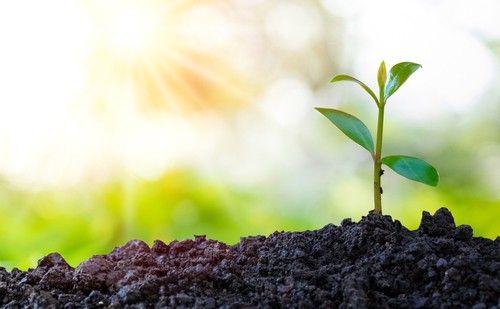
ZZ plants prefer bright, indirect light. Direct sunlight can scorch the leaves, causing them to turn brown. On the other hand, low light levels can cause the plant to grow slowly and become leggy. Therefore, it is recommended to place the ZZ plant near a window that receives bright, indirect light.
If the plant is placed in a low light area, it is recommended to use artificial grow lights to supplement the light.
3. Temperature Stress
ZZ plants are sensitive to temperature changes and can become stressed if exposed to extreme temperatures. Excess heat can cause the leaves to turn brown and wilt, while cold drafts can cause the leaves to turn yellow and drop. Therefore, it is recommended to keep the ZZ plant in a room with a temperature between 65°F to 75°F.
During the winter season, it is important to keep the plant away from cold drafts and to avoid placing it near heating vents.
Watering the ZZ Plant
Proper watering is crucial for ZZ plants to thrive. Overwatering, underwatering, and using poor quality water can cause the leaves to turn brown. In this section, we’ll cover how to determine water quality, establish a watering schedule, and deal with dehydration.
1. Determining Water Quality
The quality of water used to water ZZ plants can affect their health. Tap water may contain chlorine, fluoride, and other chemicals that can harm the plant. Rainwater is a better option, but it may not be available or practical for everyone.
Distilled water is a good alternative to tap water. It is free of chemicals and minerals that can accumulate in the soil and damage the plant. However, it lacks the nutrients that tap water provides, so it’s essential to fertilize the plant regularly.
2. Proper Watering Schedule
ZZ plants prefer to dry out between waterings. Watering too frequently can lead to overwatering, which can cause root rot and brown leaves. On the other hand, underwatering can cause the leaves to wilt and turn brown.
To determine when to water the ZZ plant, stick your finger into the soil about an inch deep. If the soil feels dry, it’s time to water the plant. If it’s still moist, wait a few more days before checking again.
3. Dealing with Dehydration

If the ZZ plant is dehydrated, the leaves will become wrinkled and start to turn brown. To revive the plant, water it thoroughly and let the excess water drain out of the pot. If the soil is extremely dry, it may take a few waterings to rehydrate the plant fully.
It’s crucial to avoid overwatering the plant after dehydration. ZZ plants are susceptible to root rot, and overwatering can cause more harm than good. Stick to the proper watering schedule and avoid watering the plant again until the soil has dried out.
By following these watering tips, you can keep your ZZ plant healthy and prevent brown leaves caused by improper watering.
Soil and Fertilizer Requirements
Choosing the Right Soil
One of the most important factors in keeping ZZ plants healthy is selecting the right soil. ZZ plants prefer well-draining soil that is not too heavy or dense. This type of soil allows water to drain away from the roots quickly, preventing root rot and other issues that can lead to brown leaves.
When repotting ZZ plants, it is important to choose a pot with drainage holes. These holes allow excess water to drain away from the roots, reducing the risk of overwatering. If the pot does not have drainage holes, the soil may become waterlogged, leading to root rot and brown leaves.
Fresh potting soil is also important for ZZ plants. Over time, soil can become compacted and lose its ability to drain water properly. When repotting, it is recommended to use fresh potting soil to ensure the plant has the best possible growing conditions.
Understanding Fertilizers
ZZ plants do not require a lot of fertilizer. In fact, overfertilizing can lead to brown leaves and other issues. It is recommended to fertilize ZZ plants once every few months with a balanced fertilizer.
When selecting a fertilizer, it is important to choose one that is specifically formulated for indoor plants. These fertilizers contain the nutrients that ZZ plants need to thrive, including nitrogen, phosphorus, and potassium.
It is important to follow the instructions on the fertilizer packaging carefully. Applying too much fertilizer can lead to overfertilization, which can cause brown leaves and other issues. It is also important to avoid applying fertilizer to dry soil, as this can burn the roots and cause further damage to the plant.
Dealing with Pests and Diseases

Identifying Common Pests
ZZ plants are generally hardy and resistant to pests and diseases. However, they can still fall prey to various pests and diseases. Some common pests that can infest ZZ plants include brown scale insects, aphids, and mealybugs. These pests can cause damage to the foliage of the plant, leading to browning and yellowing of leaves.
To identify pest infestation, look for signs such as sticky residue on the leaves, webs, and small insects on the plant. Brown scale insects can be identified by their small brown bumps on the leaves, while aphids and mealybugs are small insects that can be found on the undersides of the leaves.
Treating Diseases
ZZ plants can also be affected by fungal attacks, which can cause the leaves to turn brown. Fungal attacks are often caused by overwatering, poor drainage, or high humidity levels. To treat fungal attacks, it is important to remove the affected leaves and avoid overwatering the plant.
Another common disease that can affect ZZ plants is root rot, which is caused by overwatering and poor drainage. To treat root rot, it is important to remove the affected roots and repot the plant in fresh soil with good drainage.
To prevent and treat pest infestations, it is important to keep the plant clean and free from debris. Regularly wipe the leaves with a damp cloth to remove any dust or dirt that may attract pests. Neem oil can also be used as a natural insecticide to treat pest infestations.
Pruning and Repotting
When and How to Prune
Pruning ZZ plants is a crucial step in maintaining their health and appearance. It helps to remove any dead or yellowing leaves, brown tips, or damaged stems. ZZ plants should be pruned regularly to promote new growth and to prevent the spread of diseases.
To prune a ZZ plant, one should use clean and sharp pruning shears. The brown tips should be removed by cutting the affected leaf at the base of the brown area.
If there are any yellow or dead leaves, they can be removed by cutting them close to the soil. It is important to avoid cutting off too many leaves at once, as this can cause stress to the plant.
Repotting Guidelines
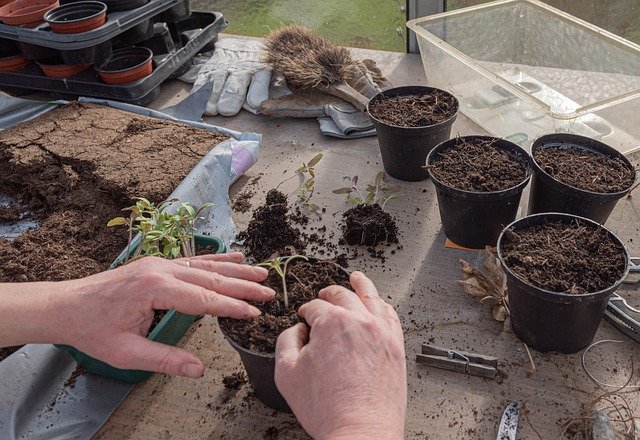
Repotting ZZ plants is necessary when the plant outgrows its current pot or when the soil becomes too compacted. Repotting should be done in the spring or summer when the plant is actively growing. ZZ plants prefer well-draining soil, so it is important to use a pot with drainage holes.
To repot a ZZ plant, one should gently remove it from its current pot, loosen any compacted soil, and remove any dead or damaged roots. The plant should then be placed in a new pot with fresh soil, making sure that the soil is not too compacted. After repotting, the plant should be watered thoroughly.
Final Tips for Healthy ZZ Plants
To keep ZZ plants healthy and looking their best, there are a few final tips to keep in mind. Firstly, it’s important to ensure that the plant’s roots are healthy. ZZ plants are prone to root rot, which can be caused by overwatering or poor drainage.
To prevent this, make sure the plant is in a well-draining pot and only water it when the top inch of soil is dry.
Stress can also cause ZZ plants to turn brown. This can be due to a variety of factors, including changes in temperature, light, or humidity levels. To minimize stress, keep the plant in a consistent environment and avoid moving it around too much.
Chlorine in tap water can be harmful to ZZ plants, so it’s important to either use filtered water or let tap water sit out for 24 hours before using it to water the plant.
Using a pebble tray can help increase humidity levels around the plant, which can be beneficial for the foliage. However, it’s important to not let the bottom of the pot sit in water, as this can lead to root rot.
Salt buildup in the soil can also cause ZZ plants to turn brown. To prevent this, flush the soil with water every few months to remove excess salts.As ZZ plants age, their lower leaves may naturally turn yellow and brown. This is normal and can be trimmed off if desired.
Using a moisture meter can be helpful in determining when to water the plant. ZZ plants prefer to be slightly on the dry side, so it’s better to underwater than overwater.
Finally, if the plant is not getting enough light, it may turn brown. Consider moving it to a shadier location if it’s getting too much direct sunlight.By following these tips, ZZ plants can thrive and remain healthy for years to come.
Frequently Asked Questions
How do you revive a dying ZZ plant?
Reviving a dying ZZ plant requires identifying the cause of the problem and taking corrective action. If the plant is suffering from overwatering, stop watering it and let the soil dry out.
If the plant is not getting enough light, move it to a brighter location. If the plant is suffering from root rot, remove it from the pot and trim away any dead or rotting roots before repotting it in fresh soil.
Why are the leaves on my ZZ plant turning brown and crispy?
The leaves on a ZZ plant can turn brown and crispy due to a variety of reasons, including underwatering, overwatering, low humidity, and exposure to direct sunlight.
To fix the problem, water the plant when the soil feels dry, increase the humidity around the plant, and move it to a location with indirect sunlight.
Why is my ZZ plant turning yellow and brown?
Yellow and brown leaves on a ZZ plant can be a sign of overwatering, underwatering, or nutrient deficiency. To fix the problem, adjust your watering schedule, ensure the plant is getting enough nutrients, and check for any signs of pests or diseases.
How often should you water a ZZ plant?
ZZ plants prefer to be kept on the dry side, so it is important not to overwater them. Water the plant when the soil feels dry to the touch, which is usually every 2-3 weeks. Be sure to allow excess water to drain away from the pot to prevent root rot.
What causes brown spots on ZZ plant leaves?
Brown spots on ZZ plant leaves can be caused by a variety of factors, including overwatering, underwatering, exposure to direct sunlight, and pest infestations. To fix the problem, adjust your watering schedule, move the plant to a location with indirect sunlight, and treat any pest infestations.
Why are ZZ plant stems turning brown?
ZZ plant stems turning brown can be a sign of overwatering, underwatering, exposure to direct sunlight, or pest infestations. To fix the problem, adjust your watering schedule, move the plant to a location with indirect sunlight, and treat any pest infestations.

Hey, I’m Lisa and I’ve been an avid gardener for over 30 years. I love writing, talking and living in the garden! Feel free to connect with me on my socials below

